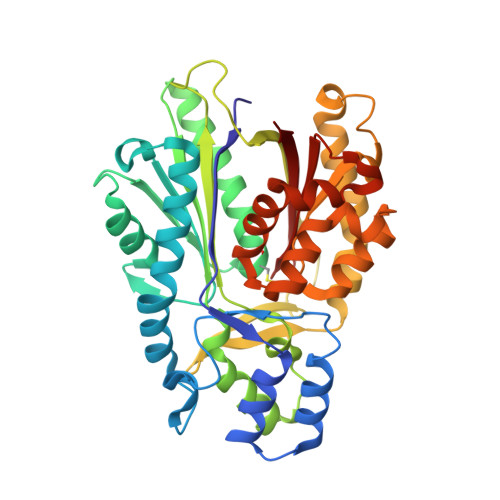Distinct Structural Elements Dictate the Specificity of the Type III Pentaketide Synthase from Neurospora crassa.
Rubin-Pitel, S.B., Zhang, H., Vu, T., Brunzelle, J.S., Zhao, H., Nair, S.K.(2008) Chem Biol 15: 1079-1090
- PubMed: 18940668
- DOI: https://doi.org/10.1016/j.chembiol.2008.08.011
- Primary Citation of Related Structures:
3EUO, 3EUQ, 3EUT - PubMed Abstract:
The fungal type III polyketide synthase 2'-oxoalkylresorcylic acid synthase (ORAS) primes with a range of acyl-Coenzyme A thioesters (C4-C20) and extends using malonyl-Coenzyme A to produce pyrones, resorcinols, and resorcylic acids. To gain insight into this unusual substrate specificity and product profile, we have determined the crystal structures of ORAS to 1.75 A resolution, the Phe-252-->Gly site-directed mutant to 2.1 A resolution, and a binary complex of ORAS with eicosanoic acid to 2.0 A resolution. The structures reveal a distinct rearrangement of structural elements near the active site that allows accommodation of long-chain fatty acid esters and a reorientation of the gating mechanism that controls cyclization and polyketide chain length. The roles of these structural elements are further elucidated by characterization of various structure-based site-directed variants. These studies establish an unexpected plasticity to the PKS fold, unanticipated from structural studies of other members of this enzyme family.
- Department of Chemical and Biomolecular Engineering, University of Illinois at Urbana-Champaign, 600 S. Mathews Avenue, Urbana, IL 61801, USA.
Organizational Affiliation:


















